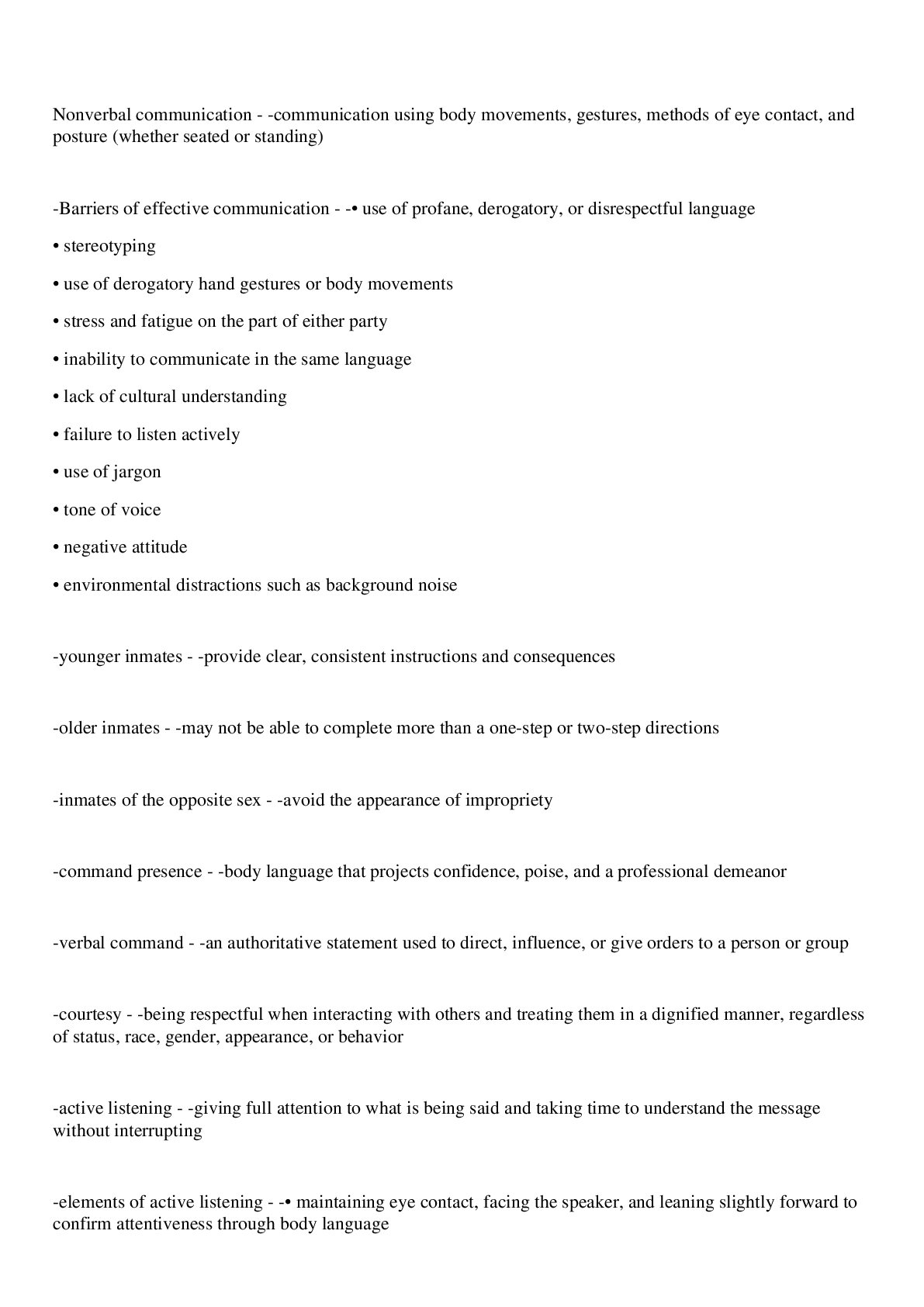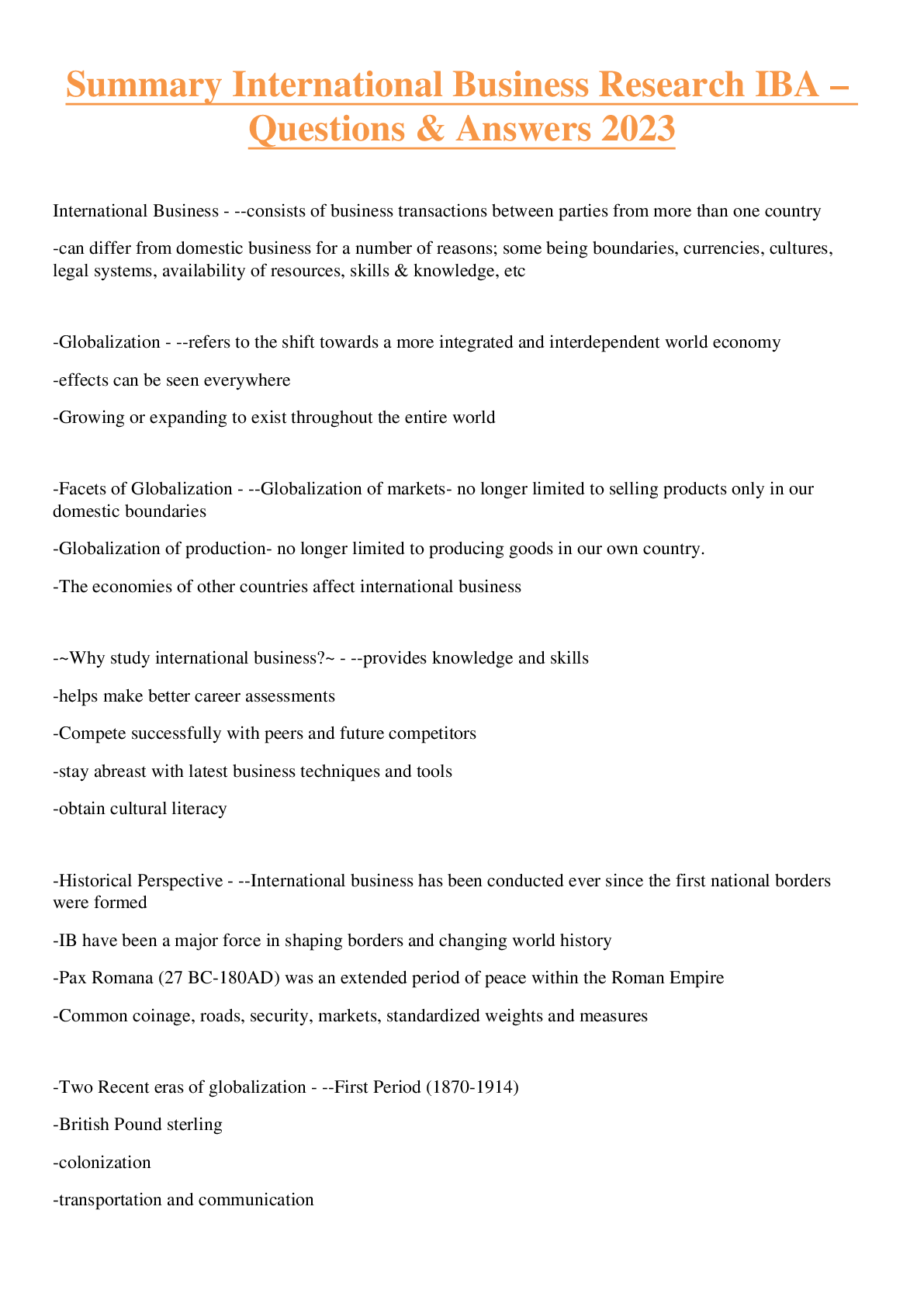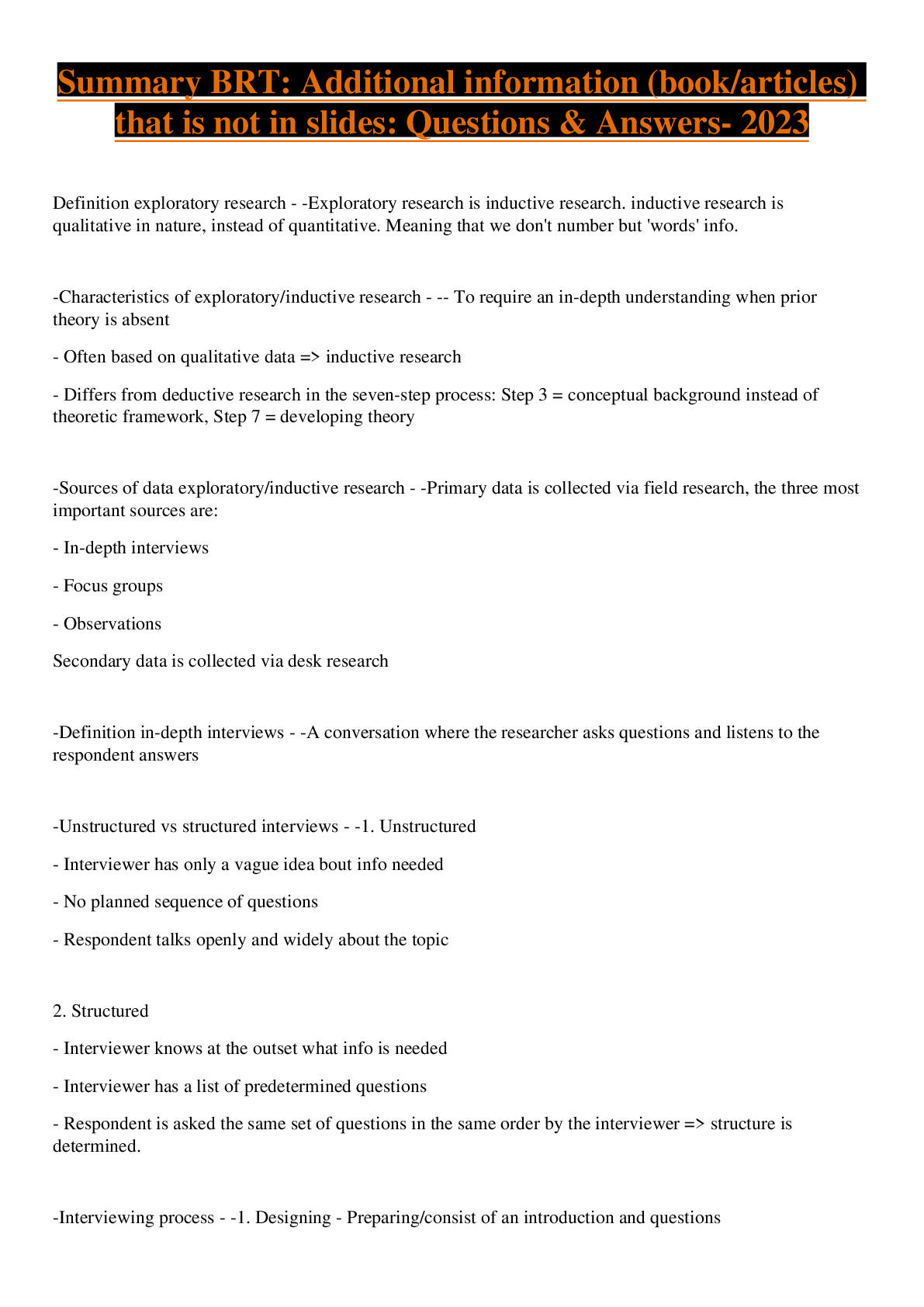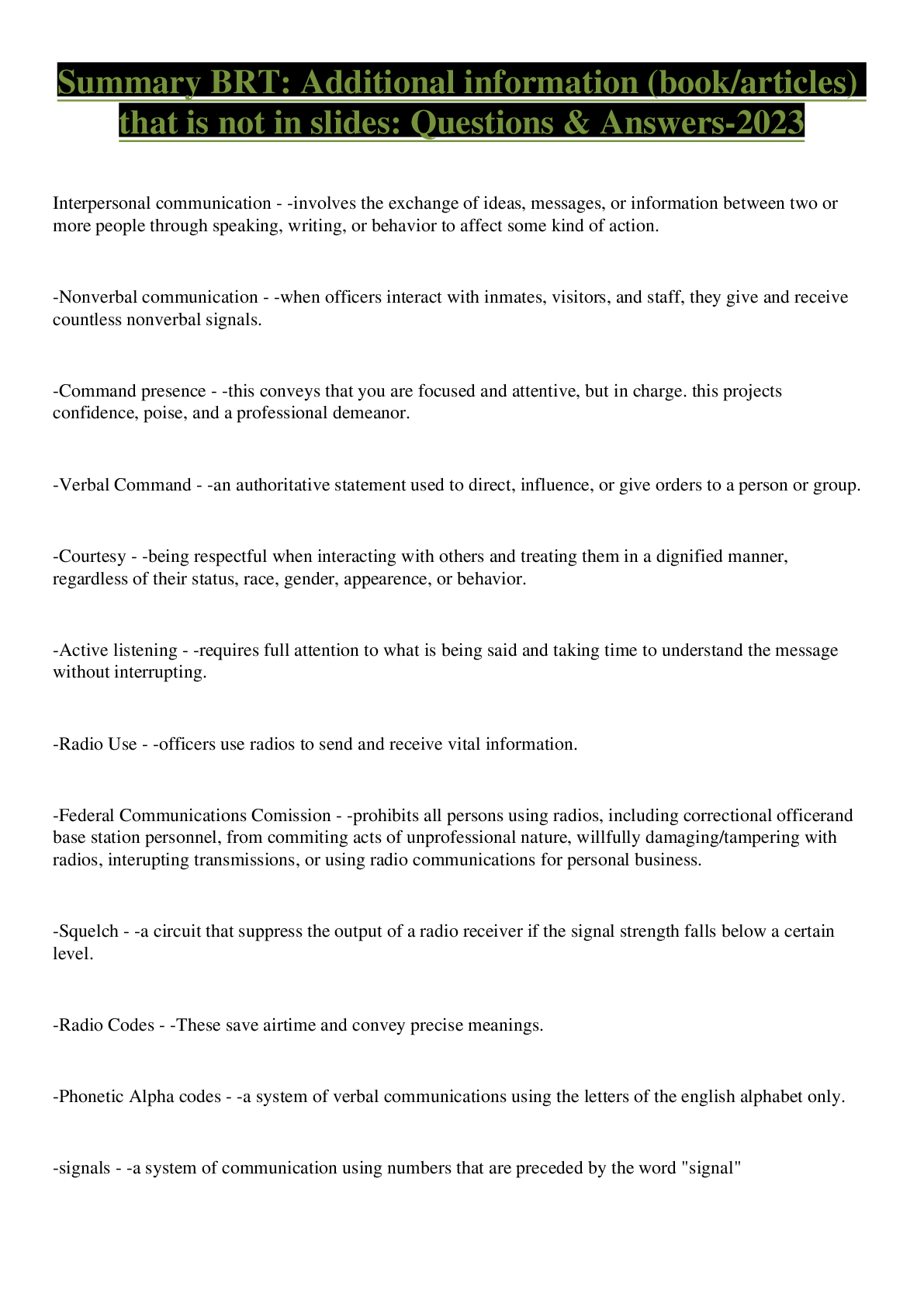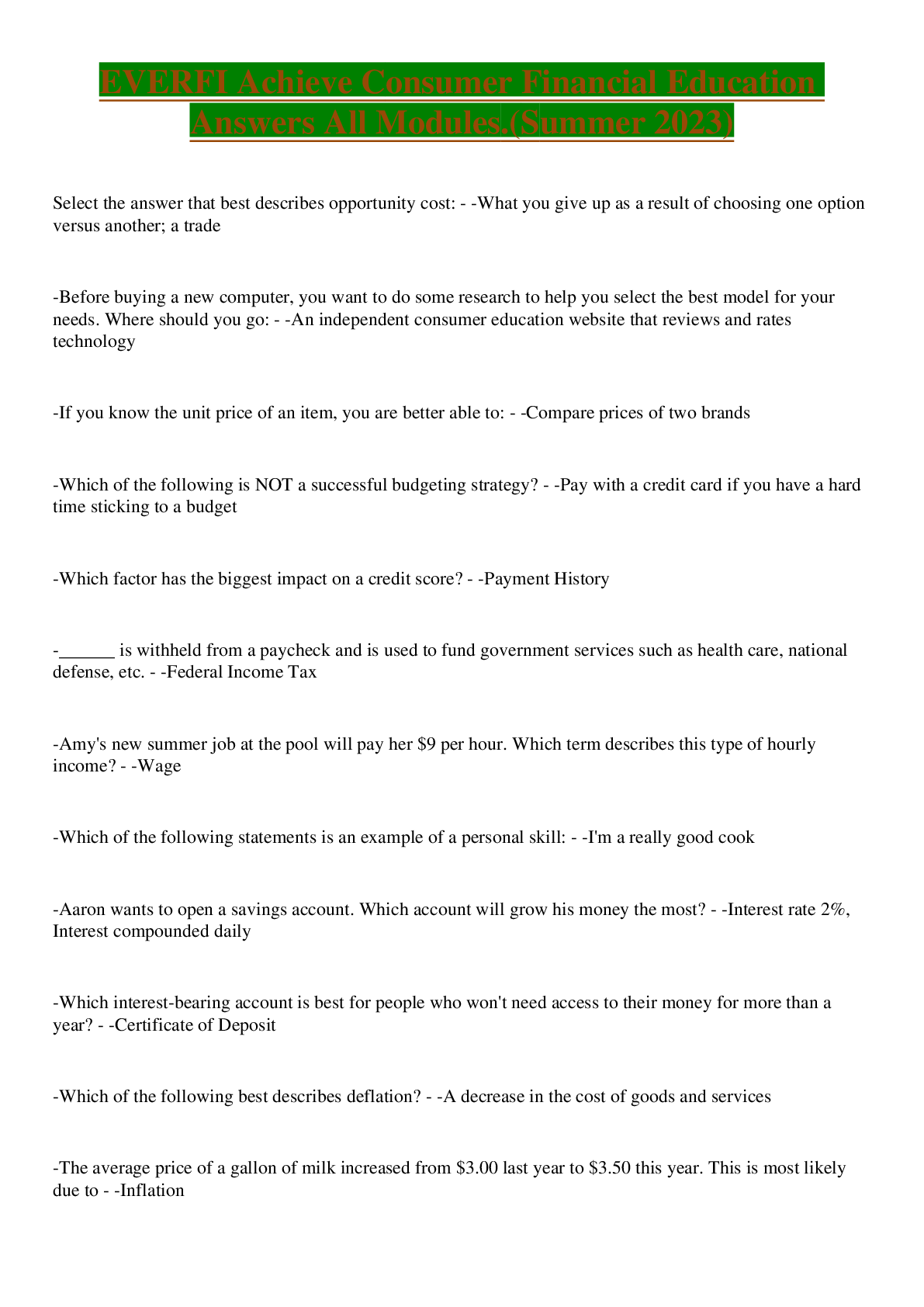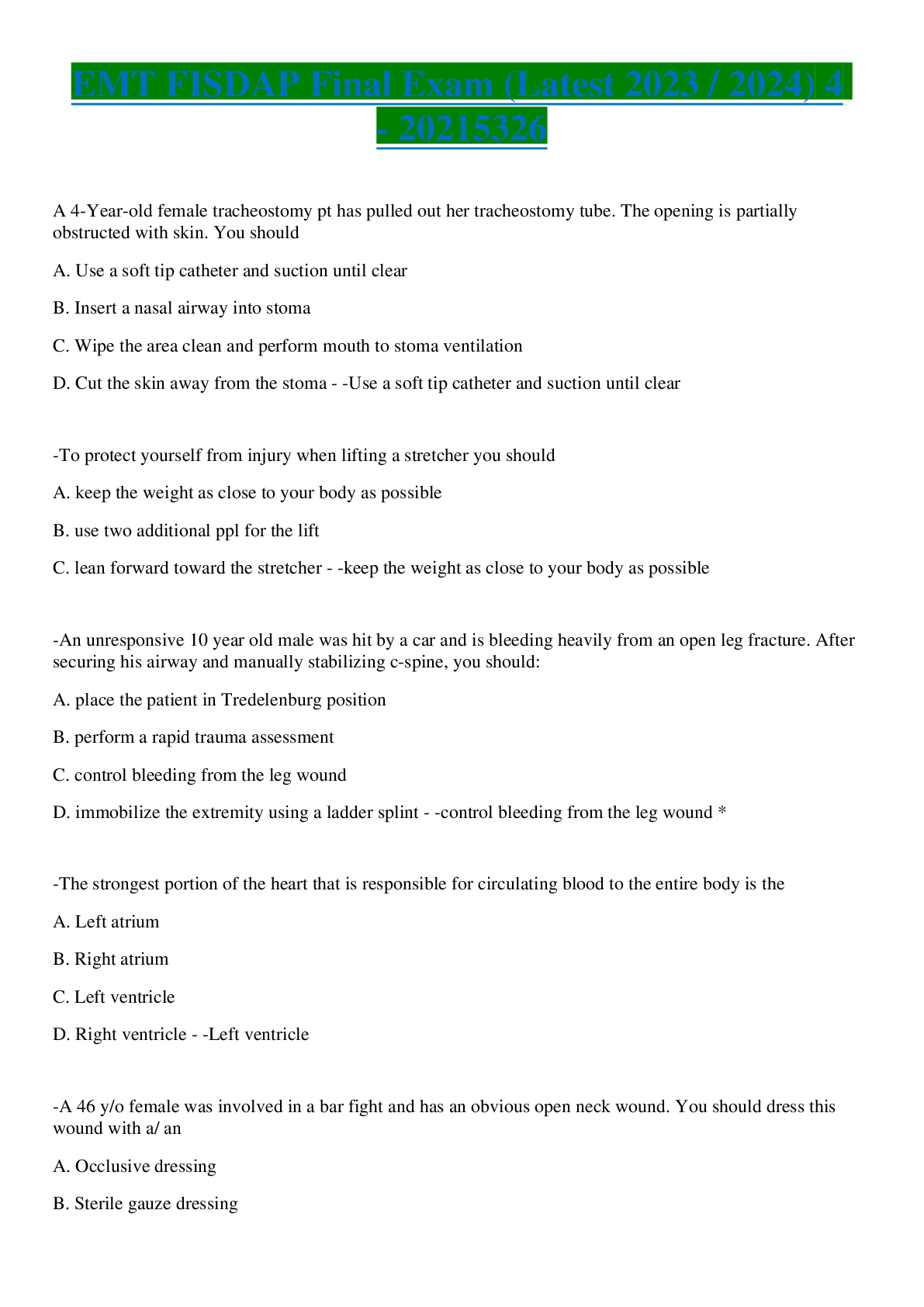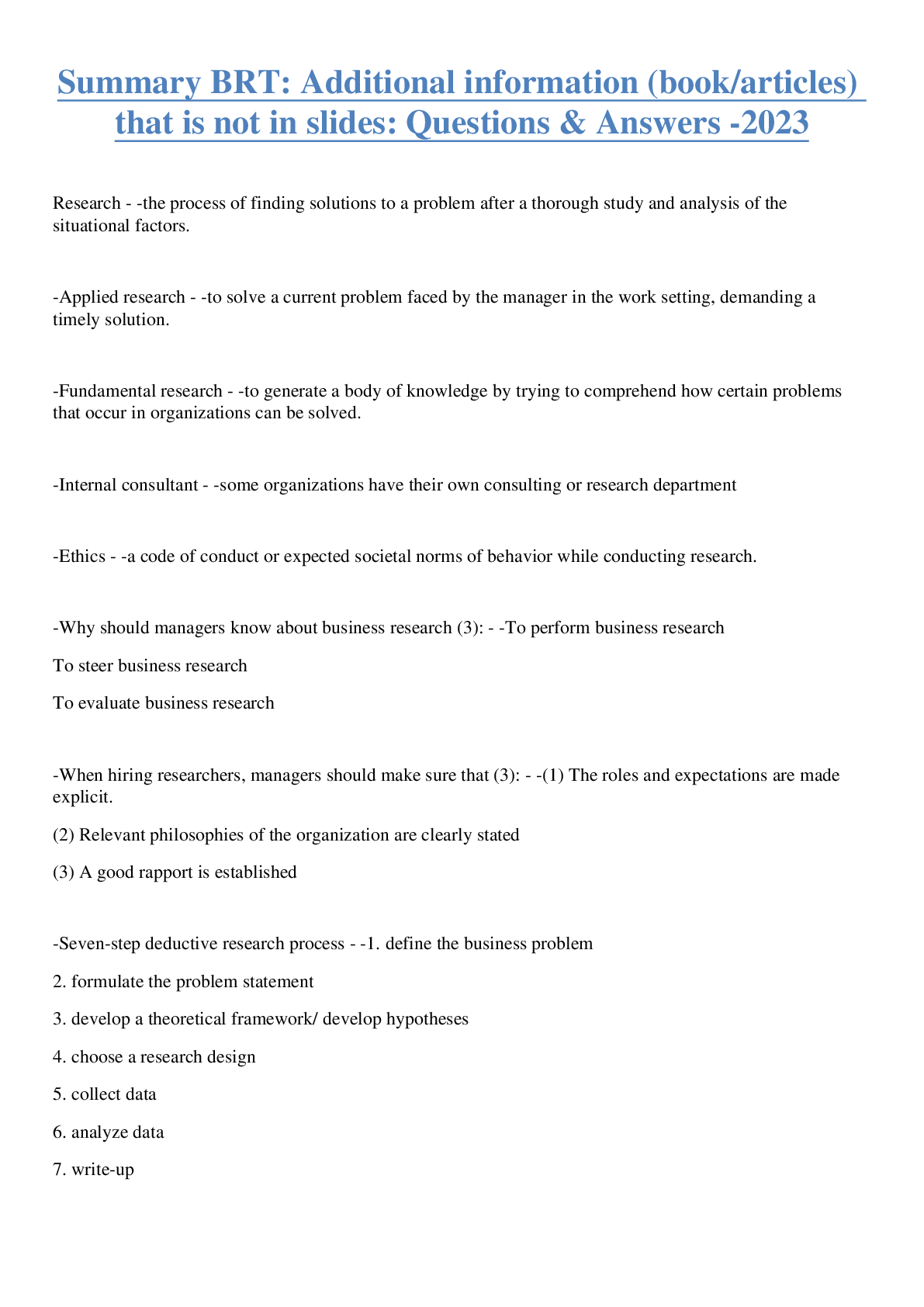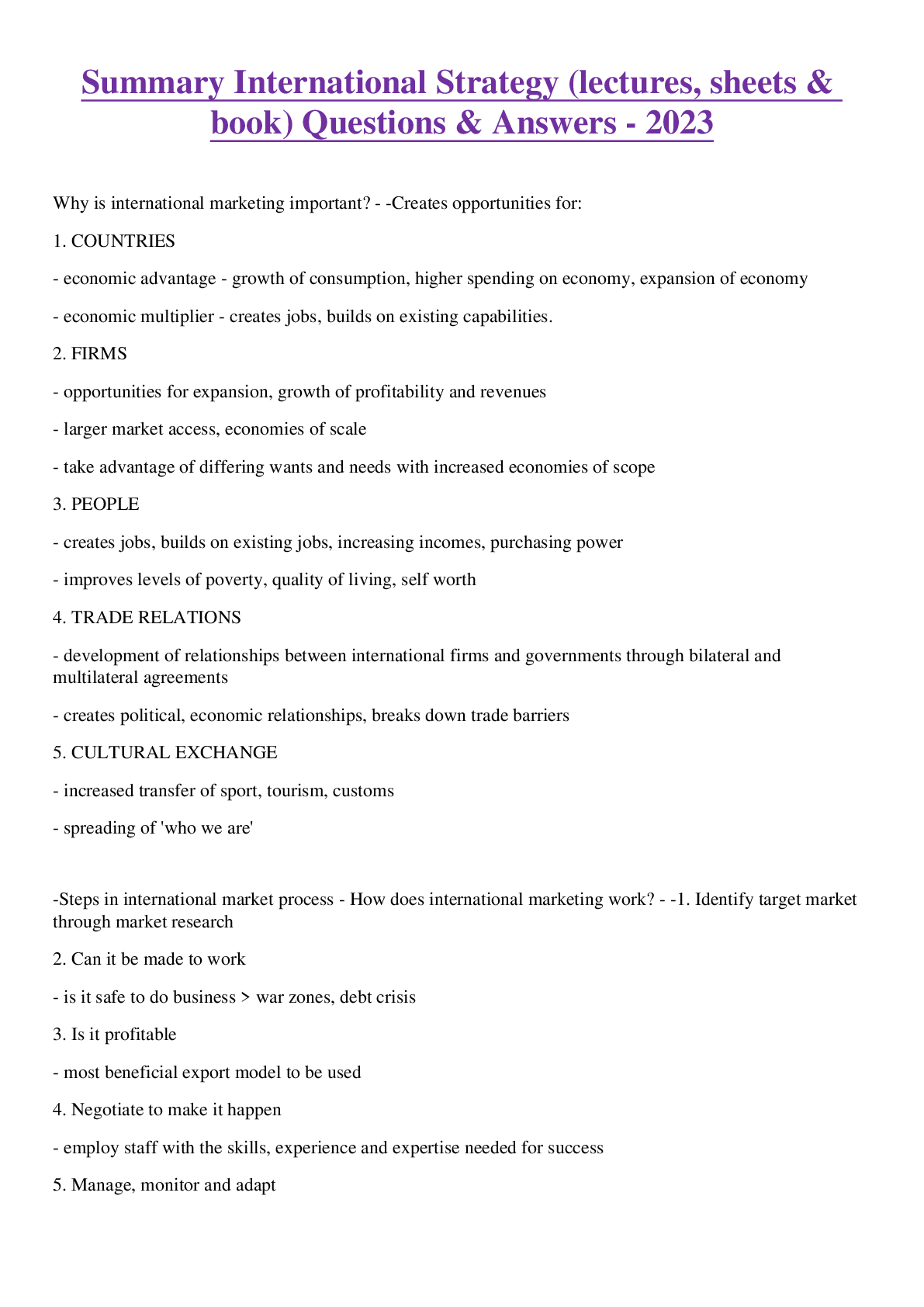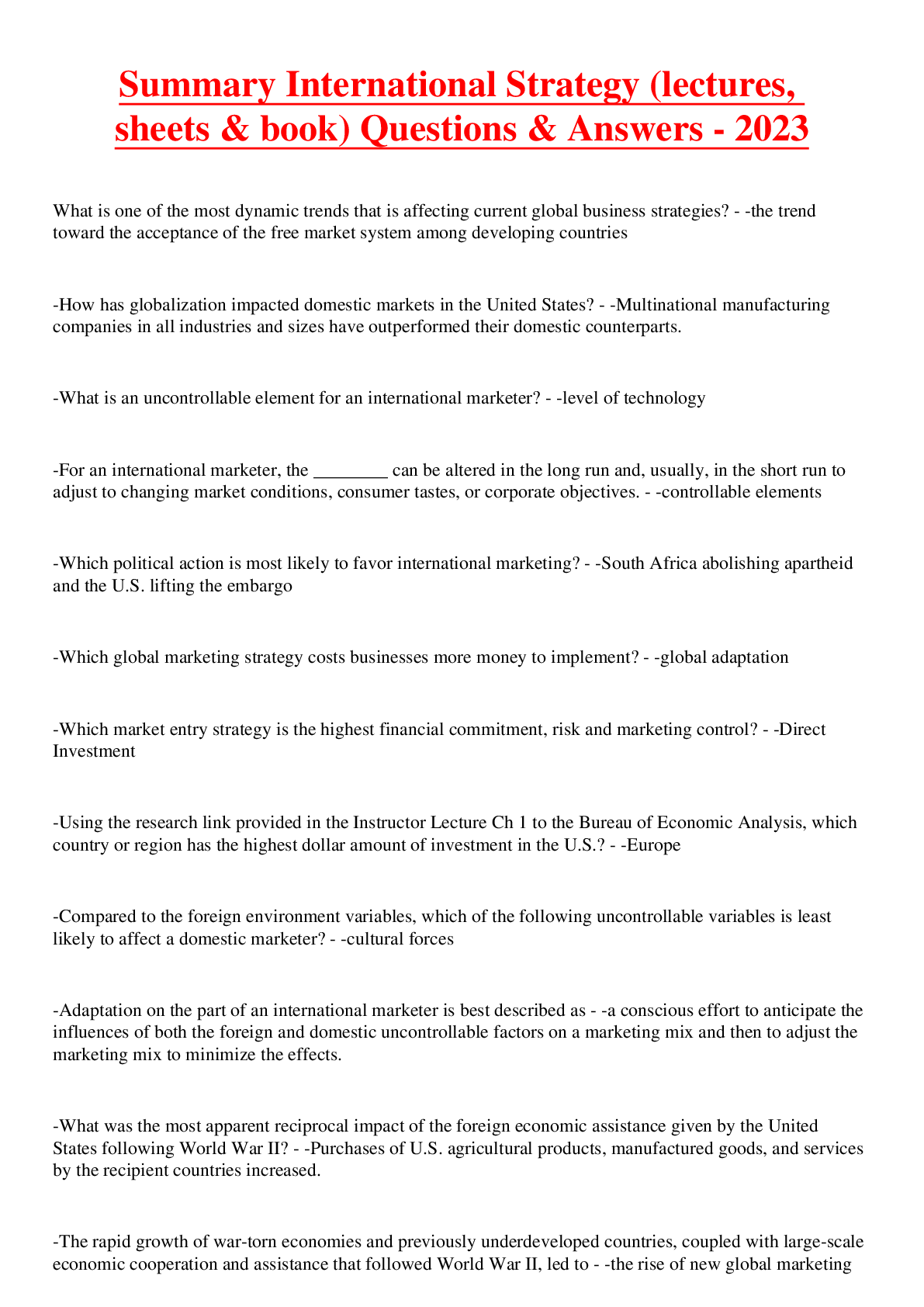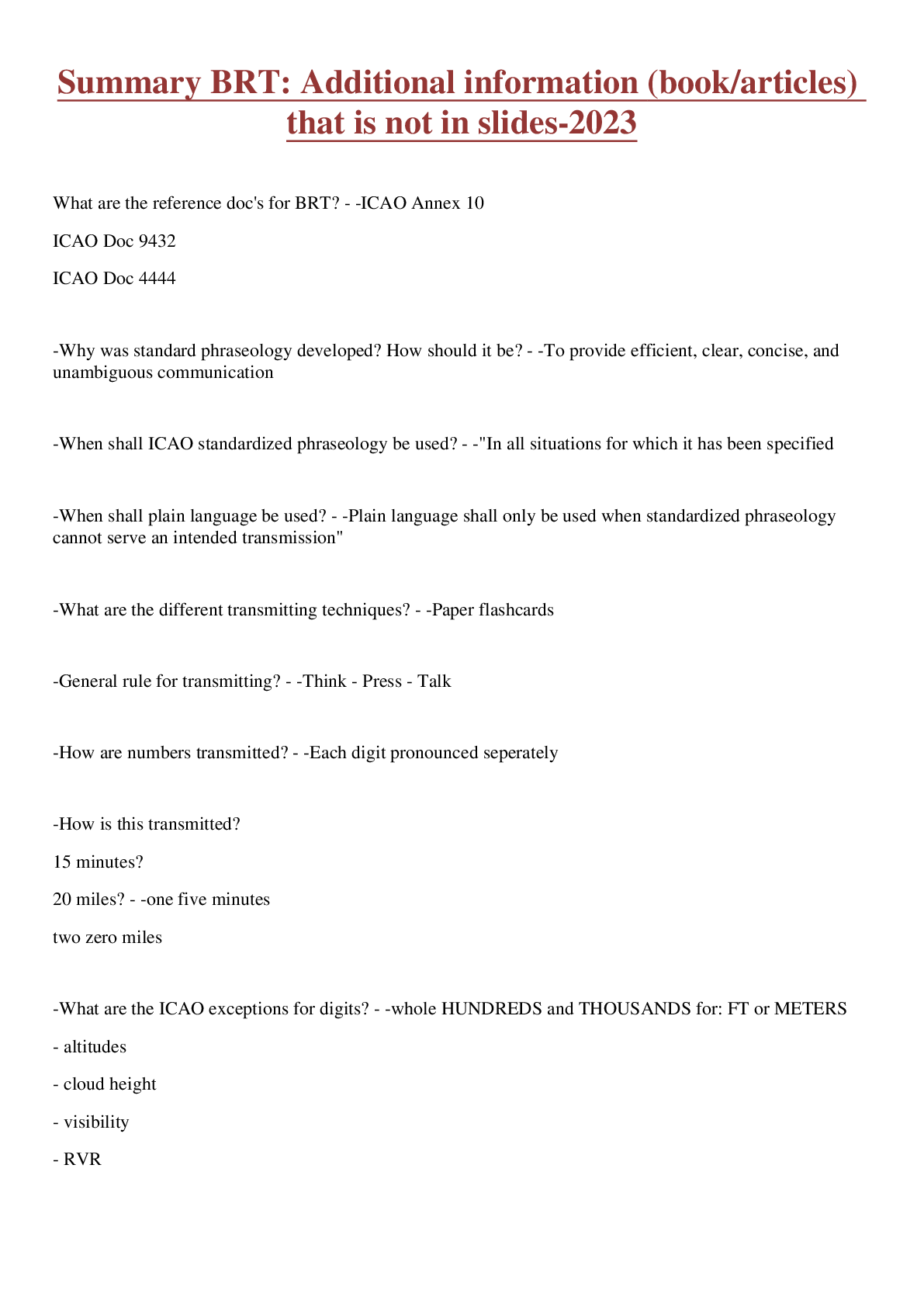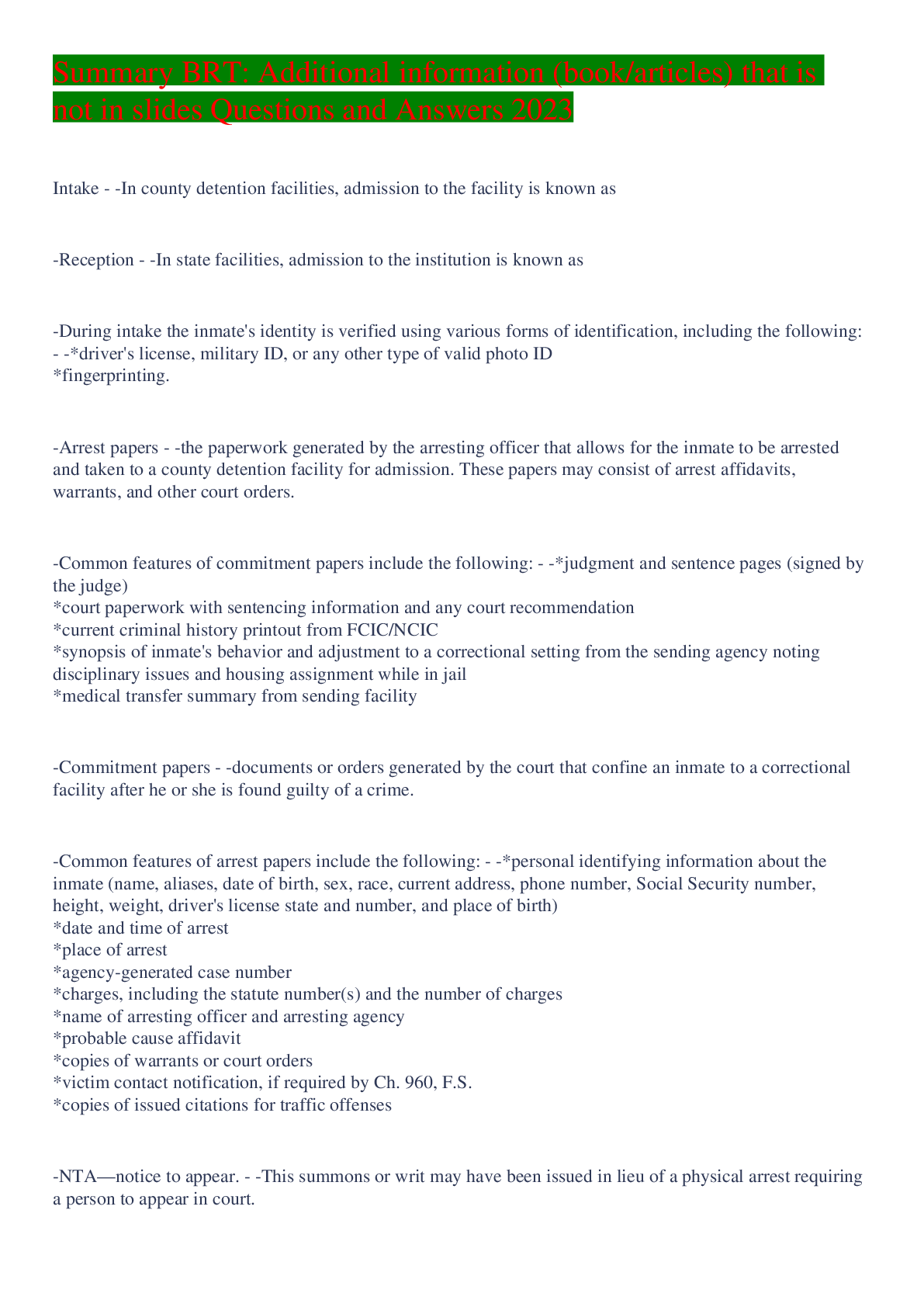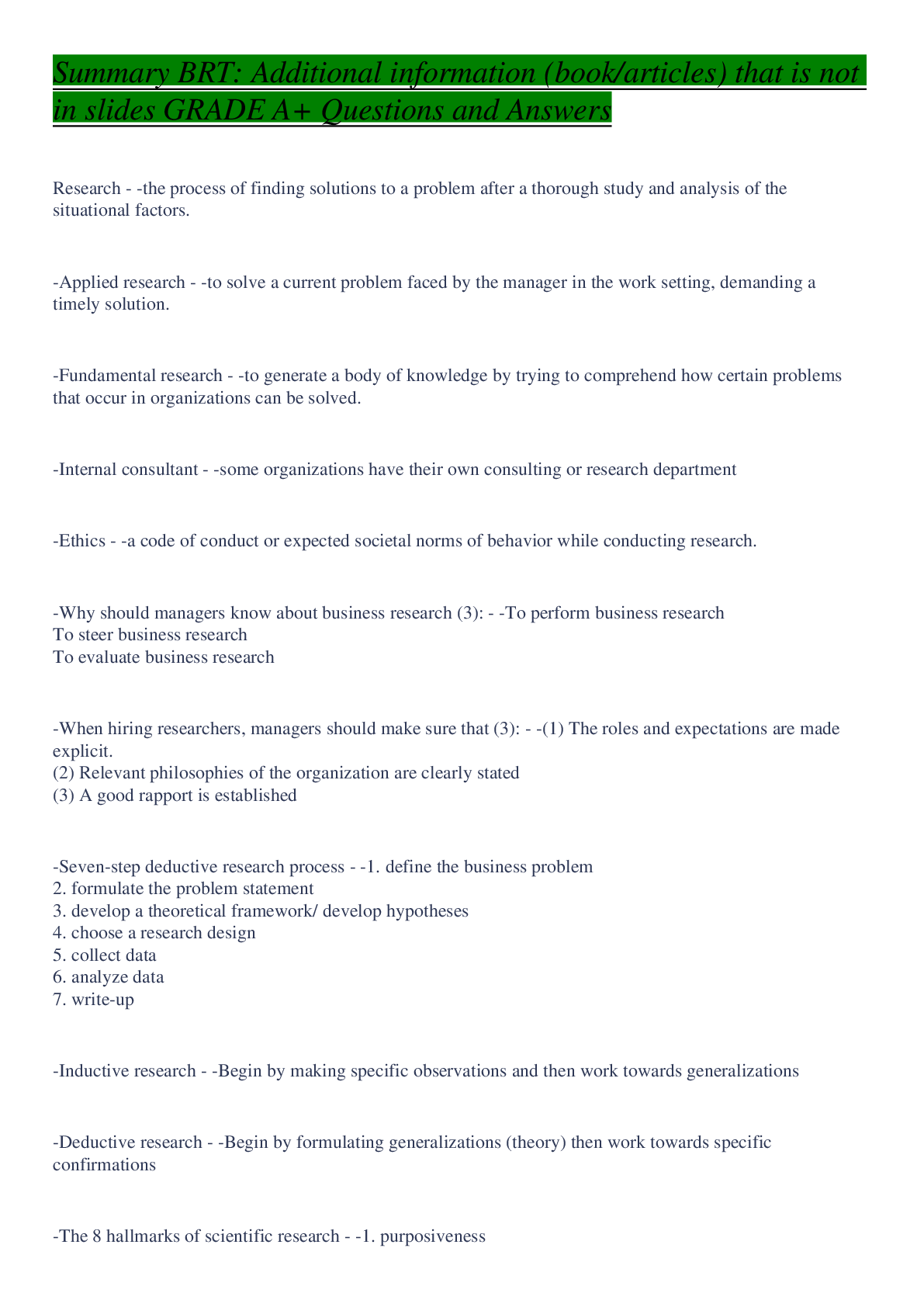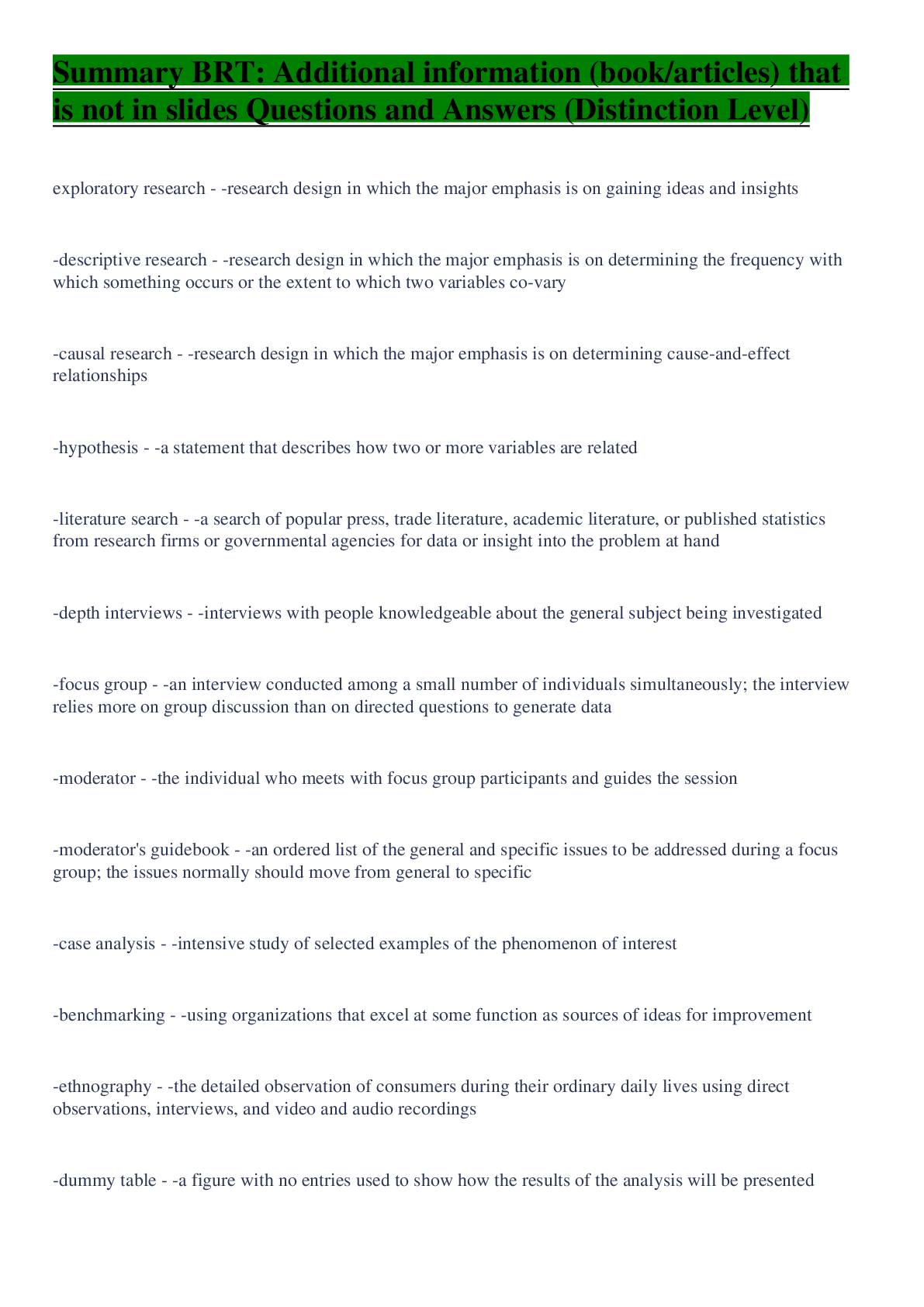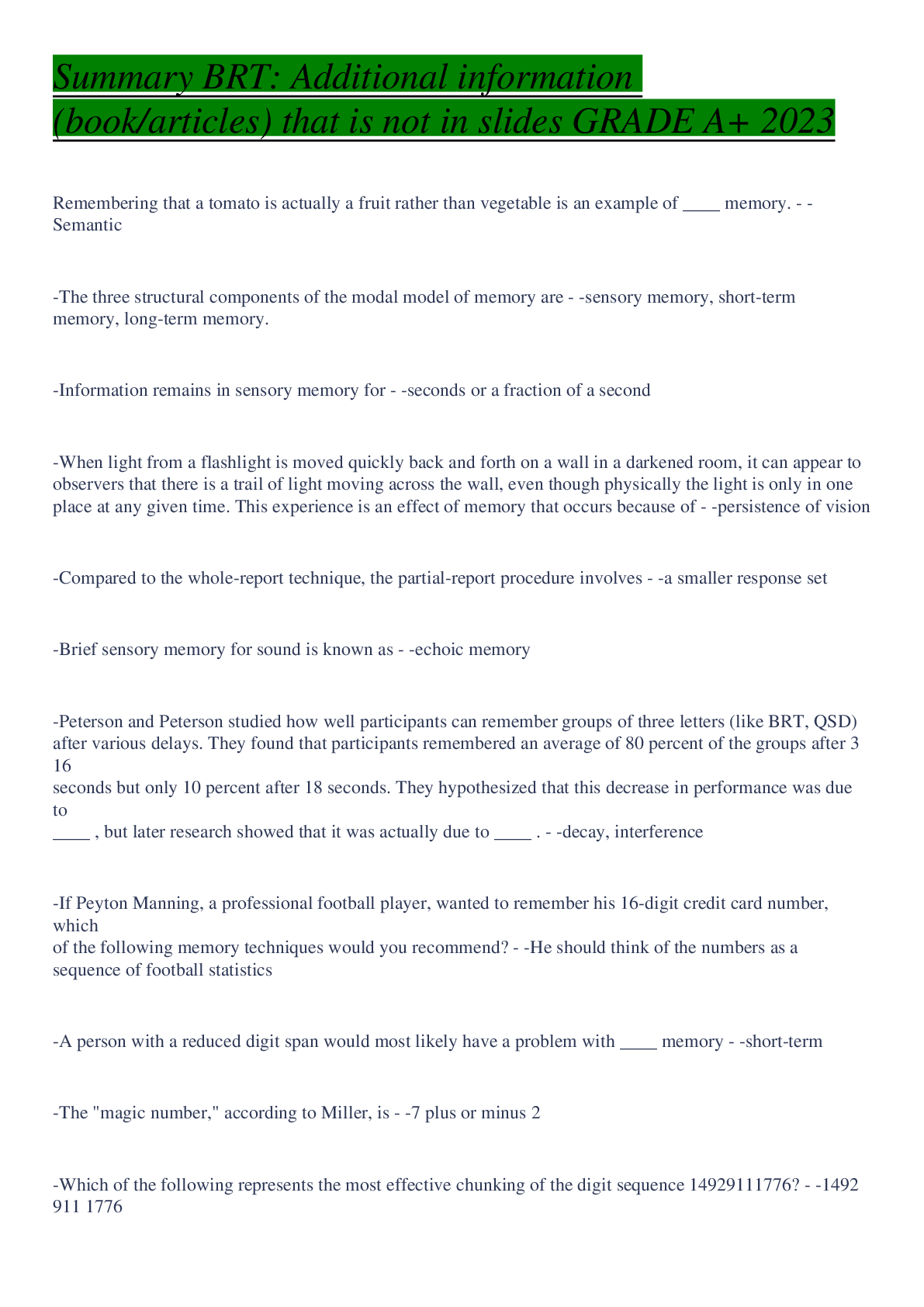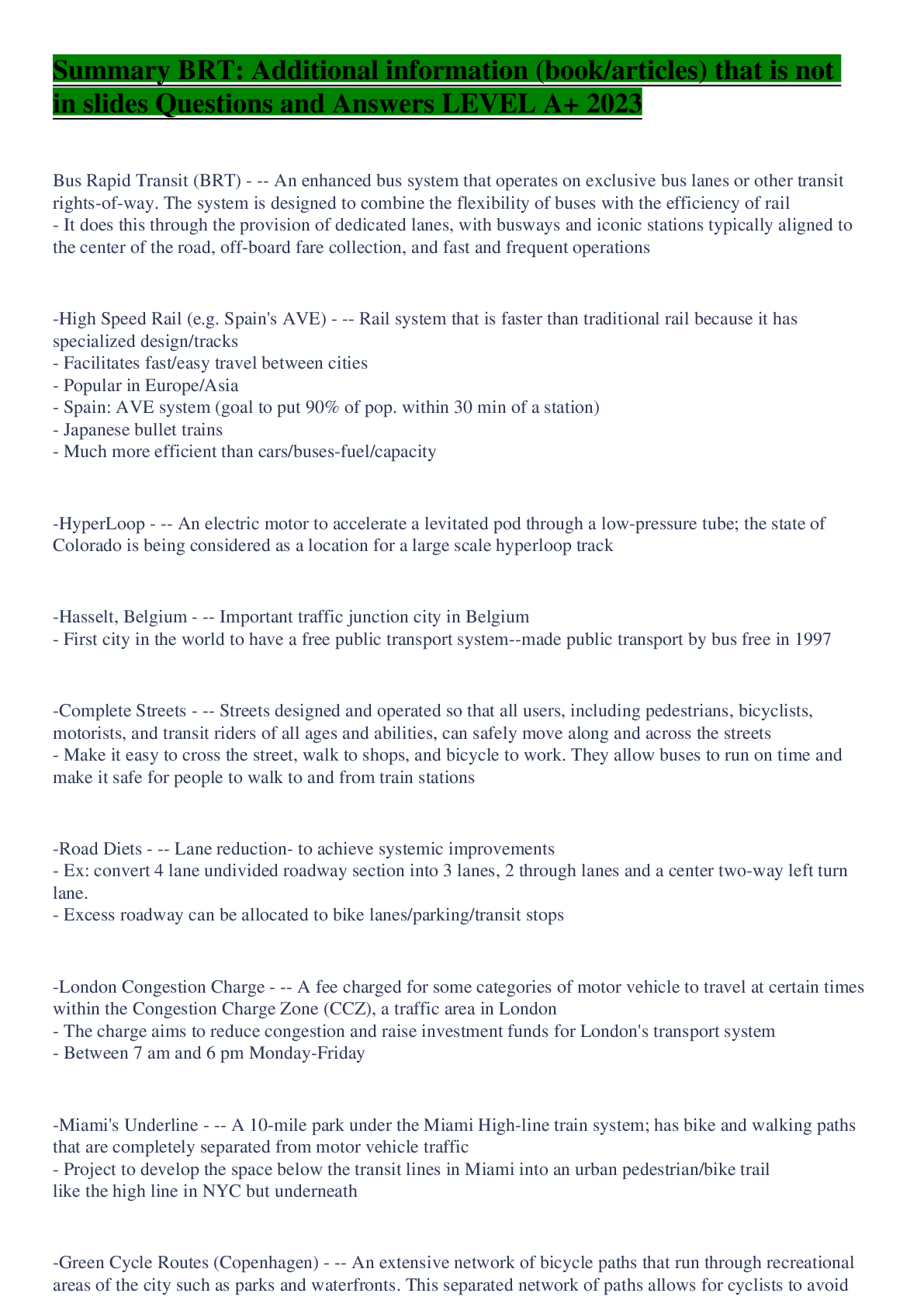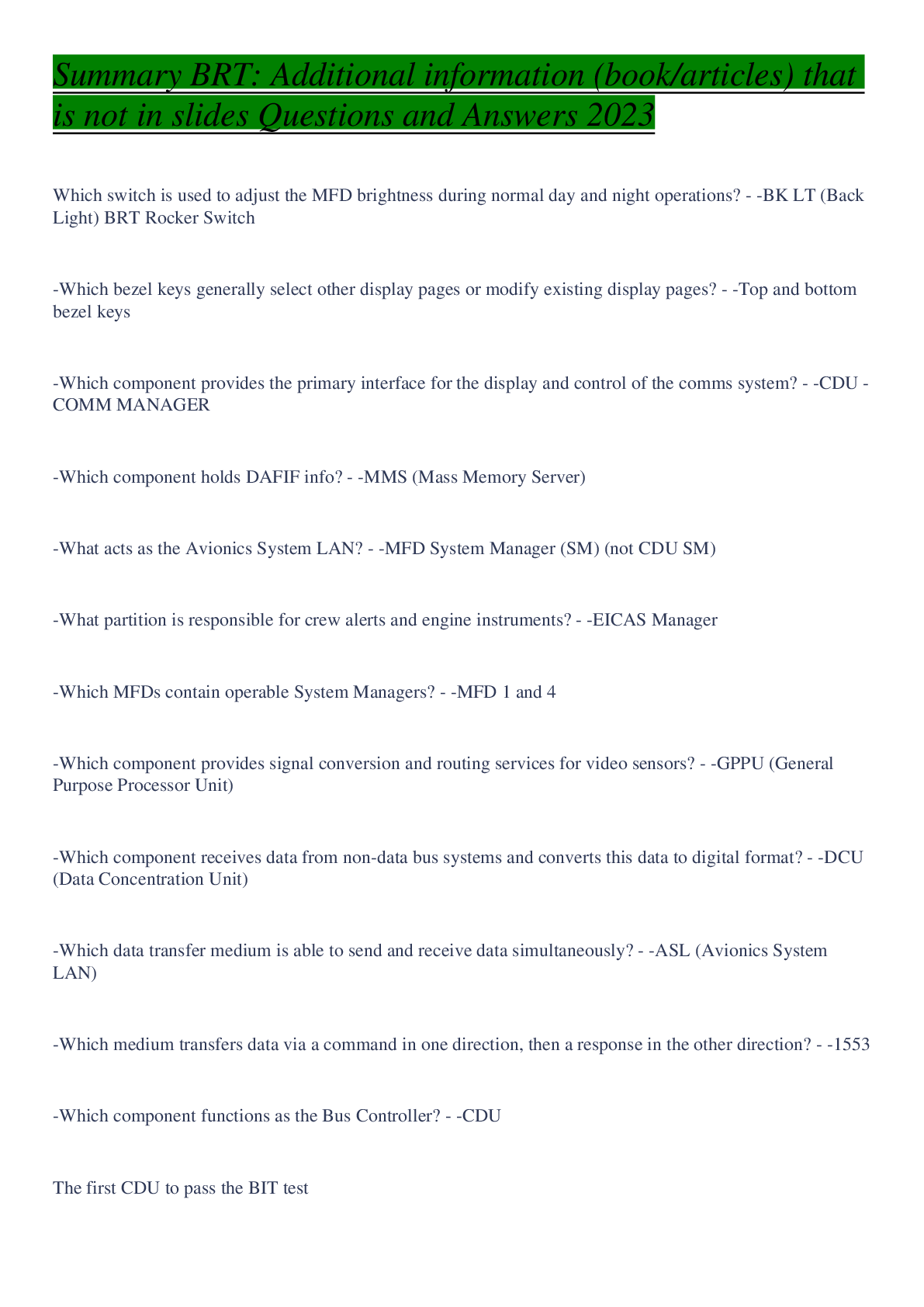Research Methods > EXAM > Summary BRT: Additional information (book/articles) that is not in slides:Q&A-2023 (All)
Summary BRT: Additional information (book/articles) that is not in slides:Q&A-2023
Document Content and Description Below
Interpersonal Communication - -involves the exchange of ideas, messages or information between two or more people through speaking, writing or behavior to affect some kind of action. -Effective Lis... tening - -requires giving full attention to what is being said and taking time to understand the message without interrupting. -Verbal Command - -an authoritative statement used to direct, influence, or give orders to a person or group. -Command Presence - -is the way an officer projects an image of authority and confidence and lets inmates know that he or she is in charge and in control. -Courtesy - -is the act of being respectful when interacting with others and treating them in a dignified manner, regardless of their status, race, gender, appearance, or behavior. -Squelch - -is a circuit that suppresses the output of a radio receiver if the signal strength falls below a certain level. -Transceiver - -receives and transmits messages. -Antenna - -helps in sending or receiving clear electromagnetic waves. -Battery - -powers the radio. -Microphone - -spoken into by the sender. -Speaker - -used to hear feedback transmission. -Push-to-Talk Button - -allows the sender to transmit the messages. -Signals - -a system of communication using numbers that are preceded by the word "signal". -Phonetic-Alpha Codes - -a system of verbal communication using the letters of the English alphabet only. -Ten or Numeric Codes - -a system of communication by which "10" precedes numbers that represent specific activities. -Numeric-Alpha Codes - -a system of communication that combines numbers and letters of the alphabet or the combination of some or all of the above to transmit messages. -Interview - -is a conversation between a correctional officer and an interviewee (inmate, visitor) with the goal of obtaining factual information. -Statement - -is a permanent record of a person's account of an incident or occurrence, which may or may not be made under oath. -Open-Ended Question - -encourage conversation and require the interviewee to think, reflect, and provide his or her opinion and feelings. -Closed-Ended Question - -are asked with a specific yes or no answer in mind. -Leading Questions - -are framed in such a way as to evoke a specific response from the individual being questioned -Direct Questions - -are a combination of closed-ended and leading questions. -Forced Choice Questions - -are asked to obtain a precise answer to an important fit or preference question by defining the range in which answers can be given. -Note Taking - -consists of marking down brief observations and quotes from the interview. -Report - -is a permanent written account that communicates all available facts of an incident or event in a correctional setting. -Who - -Names of victims, witnesses, suspects, ect -When - -Date and time incident occurred or timeline of events, -Where - -Location of incident. -What - -Details of incident such as illnesses, injuries, and behavioral descriptions of persons involved, -Why - -Reasons or causes of the incident. -How - -Means by which the incident occurred. -Action Taken - -Steps taken to resolve the incident, such as disposition, confinement, medical treatment, verbal reprimand, etc. -Incident Report - -used in many correctional facilities to report in detail all incidents involving inmates -Corrective Consultation (CC) Form - -used for minor disciplinary infractions and details counseling and corrective actions taken. -Disciplinary Report (DR) - -provides a detailed account of the facts surrounding an inmate's rule violation. This report sets in motion a series of events that ensure the inmate due process of reprimand. -Use of Force Report - -is completed any time force is used and is attached to an Incident or Disciplinary Report. -Counts Form - -used to record inmate counts as required by Florida State Statutes. -Special Watch Form - -used to record activities of inmates under any type of special watch, such as suicide watch, 15-minute watch, and direct observation. -Equipment Check Form - -used to record disposition of all equipment at each post -Sorting Information by Category - -is the grouping of recorded facts into types such as informants, victims, witnesses, suspects, weapons, rule violations, evidence, and crime elements. -Chronological Order - -is the grouping of recorded facts by date and timeline of event occurrence. -Format - -is the way information is organized and presented while content relates to the significant facts of the incident. -Jargon - -is defined as words used by a particular trade or profession that are not commonly understood by the general public but have meaning to that trade or profession. -Content - -the significant facts of an incident or occurrence in a report. -Slang - -is an informal vocabulary composed of invented words, or arbitrarily changed words, that are often used by a specific group, region, trade, or profession. -Editing - -is the process of ensuring that all pertinent facts have been included in a report in an organized and accurate manner. -Proofreading - -is the checking of a report to ensure that all words are spelled correctly, punctuation is used accurately, appropriate words are capitalized, and proper grammar is used. -Nonverbal Communication - -Behaviors that may include gestures, facial expression and methods of eye contact as well as postures, whether seated or standing, that send strong messages. -Nonverbal Clues - -sweating, rapid breathing, fidgeting, blinking or rocking back and forth. Clenched fists, pacing briskly, clenched teeth or a clear reluctance to communicate. [Show More]
Last updated: 2 years ago
Preview 1 out of 5 pages

Buy this document to get the full access instantly
Instant Download Access after purchase
Buy NowInstant download
We Accept:

Reviews( 0 )
$13.00
Can't find what you want? Try our AI powered Search
Document information
Connected school, study & course
About the document
Uploaded On
Apr 06, 2023
Number of pages
5
Written in
Additional information
This document has been written for:
Uploaded
Apr 06, 2023
Downloads
0
Views
114

